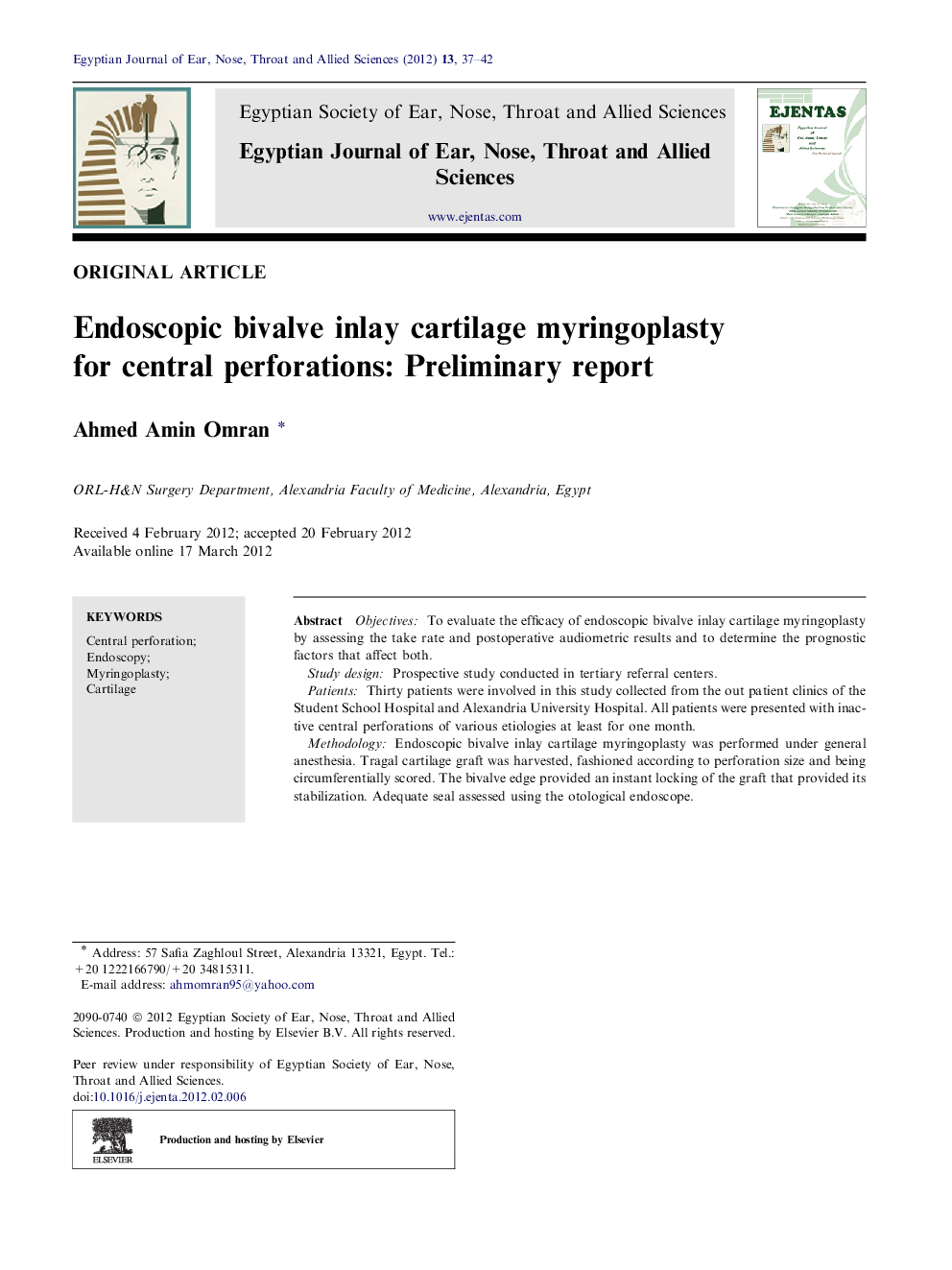| Article ID | Journal | Published Year | Pages | File Type |
|---|---|---|---|---|
| 4109079 | Egyptian Journal of Ear, Nose, Throat and Allied Sciences | 2012 | 6 Pages |
ObjectivesTo evaluate the efficacy of endoscopic bivalve inlay cartilage myringoplasty by assessing the take rate and postoperative audiometric results and to determine the prognostic factors that affect both.Study designProspective study conducted in tertiary referral centers.PatientsThirty patients were involved in this study collected from the out patient clinics of the Student School Hospital and Alexandria University Hospital. All patients were presented with inactive central perforations of various etiologies at least for one month.MethodologyEndoscopic bivalve inlay cartilage myringoplasty was performed under general anesthesia. Tragal cartilage graft was harvested, fashioned according to perforation size and being circumferentially scored. The bivalve edge provided an instant locking of the graft that provided its stabilization. Adequate seal assessed using the otological endoscope.ResultsPatient ages ranged from 9 to 57 years; mean follow-up duration was 7.75 months. Successful closure occurred in 73.3%. The only independent factor to determine this success rate was the preoperative ABG. As for ABG gain it significantly increased from 15.91 to 8.82 dB postoperatively with a mean gain of 7.09 dB. The statistically important factors affecting this ABG gain was found to be the preoperative ABG followed by perforation size.ConclusionThe success rate of this technique could be best guaranteed based on the preoperative ABG. Also ABG gain could be best achieved with larger perforation size and depending on preoperative ABG. Finally the endoscopic technique proved superiority in handling any perforation no matter how microscopically it could appear inaccessible.
